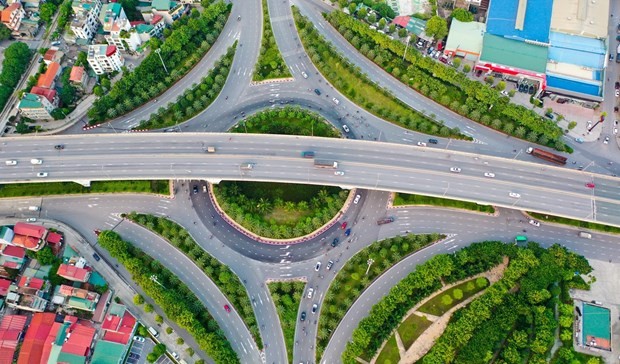
National development space to gradually take shape
Latest
 |
| Central intersection of Long Bien district, Hanoi (Photo: VNA) |
According to Deputy Minister of Planning and Investment Tran Quoc Phuong, the National Master Plan is a strategic scheme, aiming to rearrange the national development space based on the country's potential and strengths, in order to promote rapid and sustainable socio-economic development.
The National Master Plan will concretise the Socio-Economic Development Strategy 2021-2030, helping achieve the goal of becoming a developed country with high income by 2045, which was defined by 13th Party Congress’s Resolution.
Phuong underlined the importance of mobilising and using resources in the most effective way for the national interest.
Dynamic economic zones, economic corridors and centres, strategic urban areas, connecting infrastructure networks, and a national infrastructure framework have been outlined in the National Master Plan, he said.
According to Tran Hong Quang, Director of the Development Strategy Institute under the Ministry of Planning and Investment, north-south and east-west economic corridors will be developed, including corridors connecting Lao Cai - Hanoi - Hai Phong, Moc Bai - Ho Chi Minh City - Vung Tau, and Dien Bien - Son La - Hoa Binh.
Regarding dynamic regions, on the basis of existing key economic regions, some areas with the most favourable locations, international airports, gateway seaports and those with scientific and technological and innovation potential, and high-quality human resources, will be selected for forming priority dynamic regions of the country, Quang said.
Accordingly, priority will be given to developing the northern dynamic triangle (Hanoi - Hai Phong - Quang Ninh), the southern dynamic quadrangle (HCM City - Binh Duong - Dong Nai - Ba Ria - Vung Tau), the central coastal dynamic region (Da Nang - Quang Ngai), and the Can Tho - An Giang - Kien Giang triangle area.
In addition, the National Master Plan will give orientations for arranging marine and air space, and zoning and linking regions clearly.
According to Quang, previous plans have divided the country into six socio-economic regions, but the new National Master Plan proposes seven socio-economic regions, based on the comparative advantages in association with the region's role and function as well as with the development orientations of priority sectors and fields, sub-regions and regions, the network of urban areas and economic zones, and and intra-regional and inter-regional infrastructure systems.
























